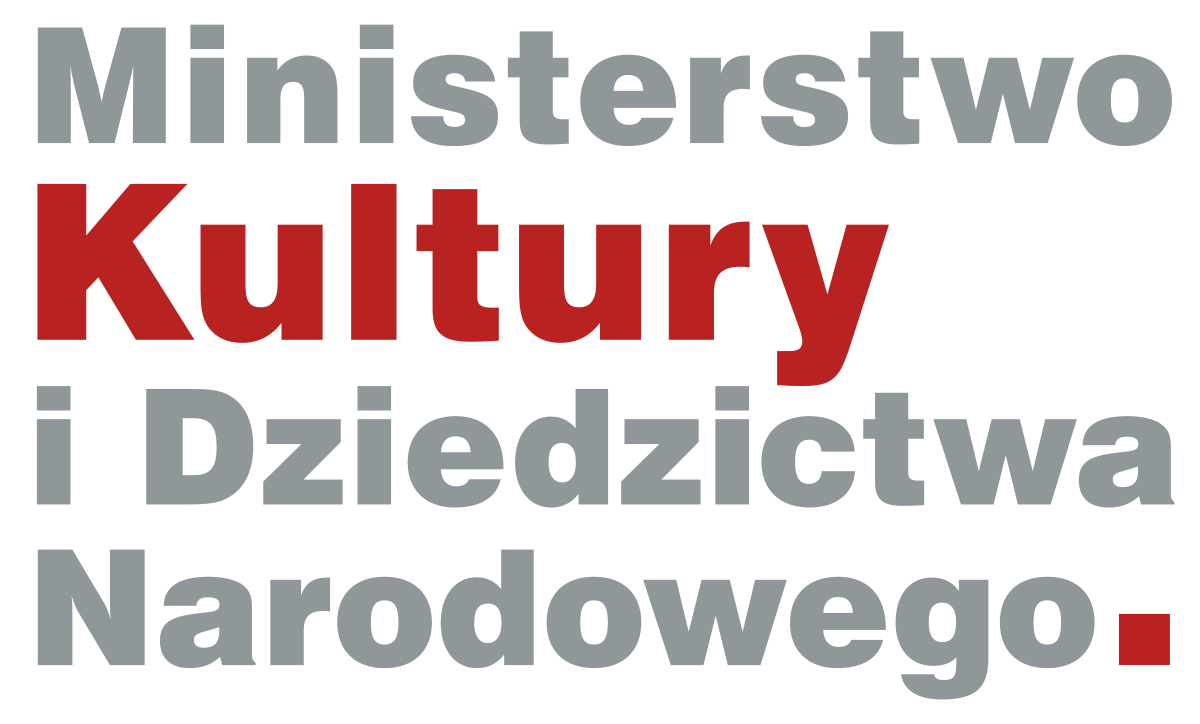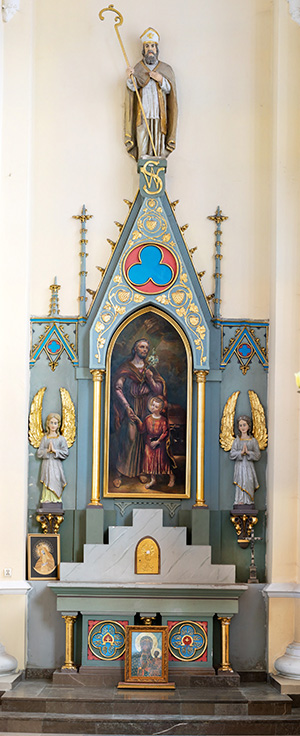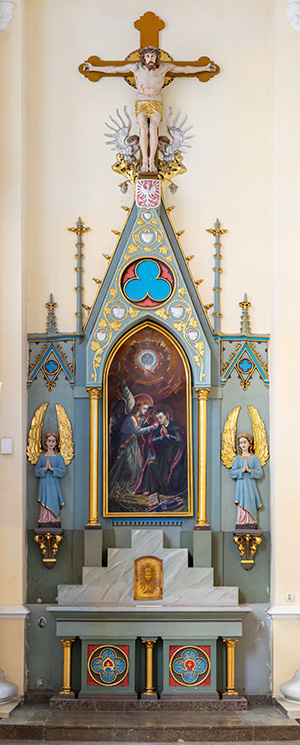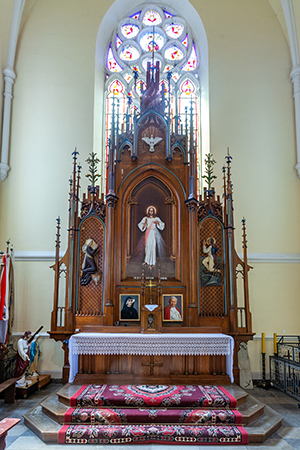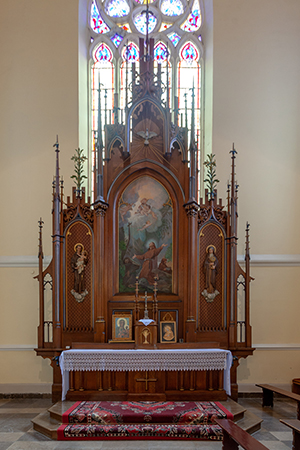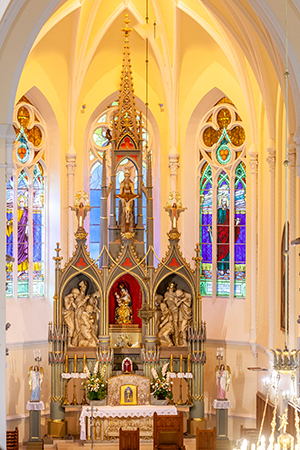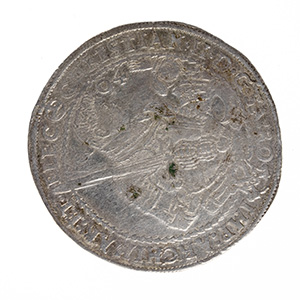Monuments
The side altar is located in the Church, centrally visible from the entrance. In 2001, Pope John Paul II awarded the church the title of Minor Basilica. The altar is free-standing, behind the altar in the background is located in the chancel.
The side altar is a free-standing, neo-gothic altar. The altar is carved, made partly of wood and partly of stucco. In the past, it was made using only natural ingredients: lime, gypsum, bone or leather glue, marble meal and dyes. Classic stucco allowed to obtain various decorative effects on the wooden surface. It was used to form intricate ornaments, figures and architectural details, i.e. so-called stuccowork, as well as smooth, mirror-like coatings that imitated the look of marble slabs.
The dominant color of the altar is azure, blue and decorative elements are made in gold. The altar is made in neo-Gothic style.
The altarpiece, or retable, is depicted in the upper part of the statue of St. Adalbert.
In the centre there is a picture of St. Joseph with a child. The side parts of the altar are two similar statues of angels.
The side altar is located in the Church, in its left side nave. In 2001, Pope John Paul II awarded the church the title of Minor Basilica. The altar is free-standing.
The side altar is a free-standing, neo-gothic altar. The altar is carved, made partly of wood and partly of stucco. In the past, it was made using only natural ingredients: lime, gypsum, bone or leather glue, marble meal and dyes. Classic stucco allowed to obtain various decorative effects on the wooden surface. It was used to form intricate ornaments, figures and architectural details, i.e. so-called stuccowork, as well as smooth, mirror-like coatings that imitated the look of marble slabs.
The dominant color of the altar is azure, blue and decorative elements are made in gold. The altar is made in neo-Gothic style.
The altarpiece, or retable, is depicted in the upper part of the statue of Jesus Christ.
In the centre there is a picture of two persons, The side parts of the altar are two similar statues of angels.
The side altar is located in the Church, the main altar is centrally visible from the entrance, on its left side, in the left side nave of the church there is a side altar. In 2001, Pope John Paul II consecrated the church to the Minor Basilica
The altar is in the transept, the transept is the transverse nave of the church, the nave perpendicular to the axis of the church, located between the chancel and the rest of its building.
The side altar is free-standing, neo-Gothic and faces the front of the central axis of the church. The altar is carved, made of wood, painted with clear varnish. The colour of the wood used for the altar resembles walnut / golden oak.
The side altar is located in the Church, the main altar is centrally visible from the entrance, on its right side, in the right side nave of the church there is a side altar. In 2001, Pope John Paul II consecrated the church to the Minor Basilica.
The altar is in the transept, the transept is the transverse nave of the church, the nave perpendicular to the axis of the church, located between the chancel and the rest of its building.
The side altar is free-standing, neo-Gothic and faces the front of the central axis of the church. The altar is carved, made of wood, painted with clear varnish. The colour of the wood used for the altar resembles walnut / golden oak.
The main altar is located in the Church, centrally visible from the entrance. In 2001, Pope John Paul II awarded the church the title of Minor Basilica. The altar is free-standing, behind the altar in the background is located in the chancel.
The main altar is divided into three parts, divided by columns. The columns are also on the outer parts of the altar, altogether there are 4 of them.
The central point of the main altar is the figure of Our Lady of the Immaculate Conception on a red background. The Mother of God is in the crown and holds the baby in her arms who is also in the crown. The robes of the Holy Mother of God are in gold. At the sides, in the so-called side recesses, there are two groups of Polish saints, made of plaster with a size of 180 cm.
An additional element is the painting of St. Adalbert, which automatically slides out in the central part of the altar, covering the statue of the Holy Mother of the Immaculate Conception.
The described treasure consists of 265 silver coins dated for years 1604-1623. Some of the coins were collected by the king Zygmunt III Wizards. The only exception is the Saxon Thaler of Krystian II created in 1604. The rest of the treasure are coins created somewhere in the Kingdom of Poland. On the heads of the coins is the emblem of Kingdom of Poland - the White Eagle and emblem of Lithuania - Pogonia, as well as coat of arms of the Waza royal family.
Subcategories
Page 1 of 14








